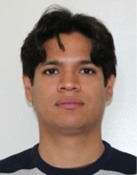Program Information
Towards Modeling Proton Pencil Beam Scanning for Accurate Simulated QA
J Luna*, L Ungar , J Zou , J Weimer , E Diffenderfer , University of Pennsylvania, Philadelphia, PA
Presentations
SU-I-GPD-T-151 (Sunday, July 30, 2017) 3:00 PM - 6:00 PM Room: Exhibit Hall
Purpose: To preprocess and format machine collected data regarding physical and dosimetric characteristics of a proton pencil beam scanning system (PBS) to estimate an accurate causal model of the beam dynamics.
Methods: A set of machine parameter logfiles generated by the IBA proton treatment control and delivery system was analyzed. We extracted and classified a set of time-varying features in order to build a model by training a three-layer recurrent neural network (RNN). Our goal is to replicate the dynamics of the beam to predict the integrated dose delivered during treatment using such model. We are currently developing the automated process of feature collection that accesses the logfiles and selects the fields of interest to vectorize and deliver them to the RNN. To the best of the authors’ knowledge, the resulting data constitutes the first comprehensive dataset of proton beam delivery parameters.
Results: We have identified a set of 35 time-varying features, (e.g., beam width and position, dose, primary and secondary currents and voltages, fields, time stamps and beam on/off, among others), as the inputs of the RNN. The output was extracted from acquired records of parameter verification for PBS spot delivery dosimetry using the Lynx detector. The output vector consisted of a down-sampled set of spots that allowed the integrated dose to be calculated on regions in the phantom.
Conclusion: We are building the first systematically organized dataset of proton beam therapy machine parameters. An initial exploration of relevant features to be considered in PBS delivery was performed. The dataset is being designed for the training of a causal model of the beam using RNN which, in contrast with Monte Carlo (MC) simulations, would allow fast simulated inter-fraction patient specific QA, as well as reduction of machine QAs, which translates into a reduction of the beam cost/hour.
Contact Email:
